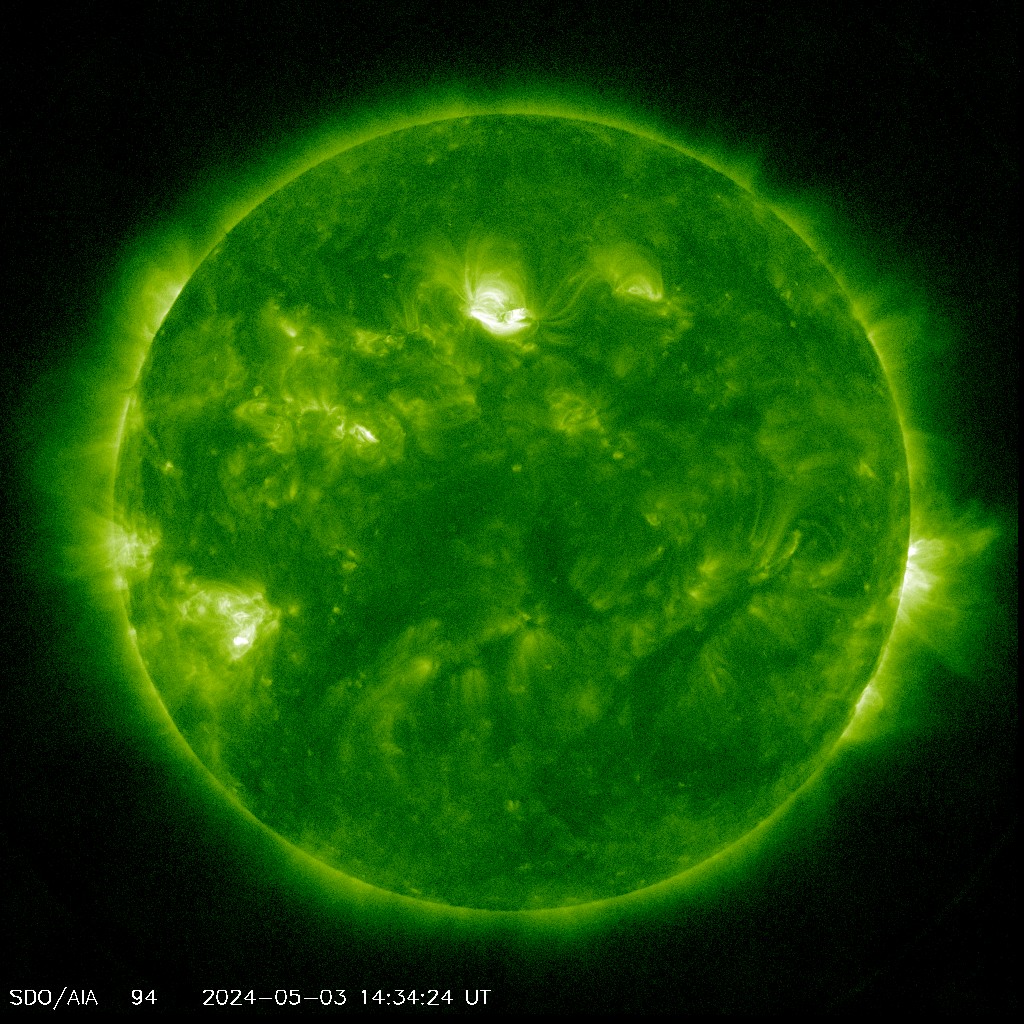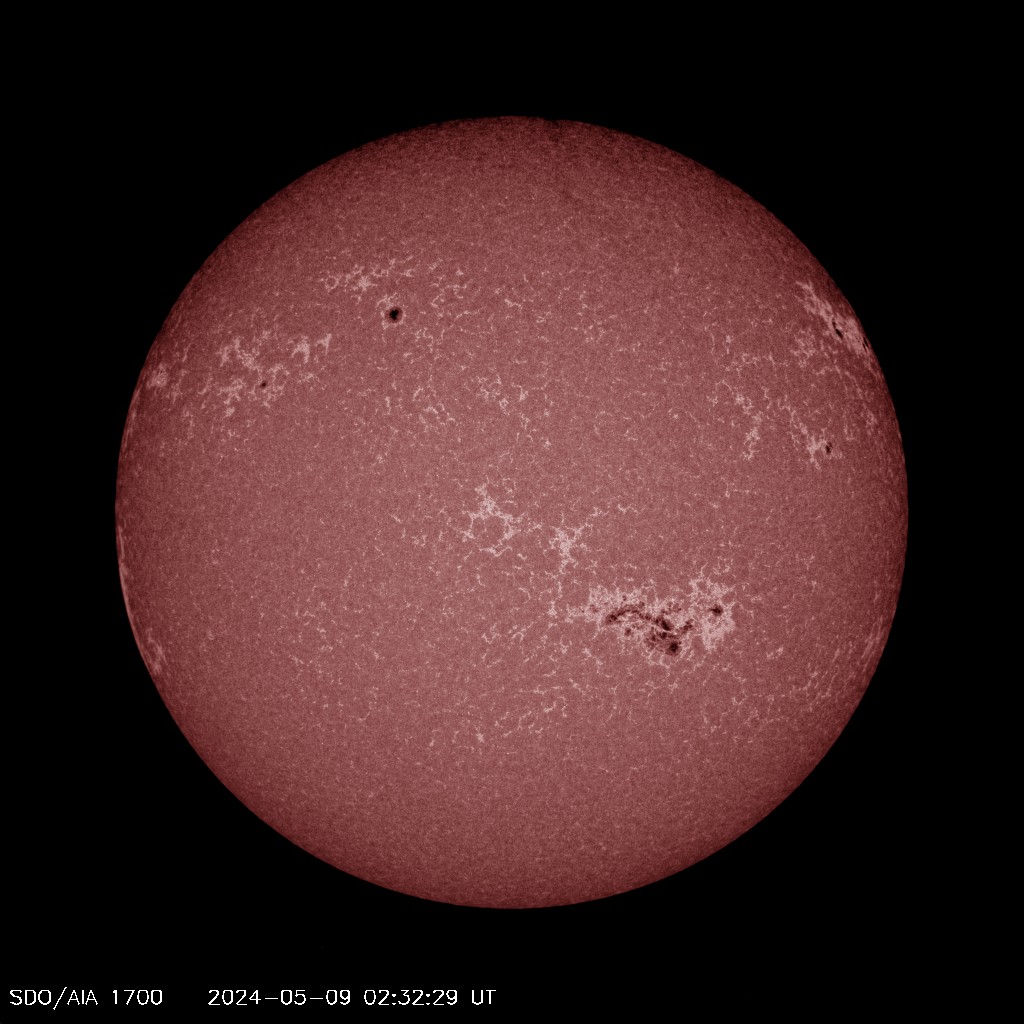Hello again Space Enthusiasts! Just a week after the Supermoon we are witnessing another fantastic space phenomena... a giant sunspot:
Image Source: Solar Dynamics Observatory HMI Intesitygram
http://sdo.gsfc.nasa.gov/data/
For scale, this magnetically active region is larger than the Earth! On May 10th this active region released an intense M-Class solar flare. There did not appear to be any large Coronal Mass Ejection (CME) associated with this flare, however only a day later a CME did occur that is now en route to the Earth. This bundle of energetic plasma is due to arrive at Earth's magnetosphere on May 14th, and may result in enhanced geomagnetic activity.
So you may be wondering just how frequently sunspots occur, and whether this large sunspot is unique. The answer is that the Sun is a highly dynamic object, and goes through a cycle of magnetic activity that lasts approximately 11 years and is associated with the magnetic field of the Sun reversing direction. During this cycle the Sun goes from a pretty quiescent disk to one with sunspots increasing in frequency, size, and intensity. We've been telescopically observing and cataloguing sunspots since the early 1600s, and have found a beautifully repeating pattern:
Image Source: http://www.globalwarmingart.com/wiki/File:Sunspot_Numbers_png
We are currently ramping up to solar maximum (in 2012-2013), and therefore should see an increase in the number of sunspots and the amount of solar activity like flares, and CMEs. When the packet of energetic plasma and magnetic field that make up a CME reaches the Earth it can have a wide range of effects from generating beautifully intense aurora to damaging space borne assets to disrupting GPS and communication systems. In only the most extreme cases can the resulting geomagnetic storm (which is the general term used to describe a perturbation to the Earth's magnetosphere during a CME encounter) cause damage to electric power grids and oil pipelines, and cause redirection of cross-polar flights.
To get a realtime look at the Sun, check out the websites of the Solar Dynamics Observatory (SDO), STEREO, and the SOlar and Heliospheric Observatory (SOHO). At these sites you can view the Sun in the visible light emission (like the image above), and also see what the Sun looks like in the UltraViolet or UV part of the spectrum (in false color of course since we can't see at those wavelengths). You can also get Space Weather updates, alerts, and other great news at www.SpaceWeather.com!
The Sun in the EUV (9.4 nm) and FUV (170 nm).
Image Source: http://sdo.gsfc.nasa.gov/data/
One last riddle to leave you with: When is a sunspot not a sunspot?
Answer:
When it's a Venus Transit!!! Coming on June 5th!
A post on this exciting event is coming soon!




Wow, talk about timing! Check out June's National Geographic Issue for more about the approaching solar maximum:
ReplyDeletehttp://ngm.nationalgeographic.com/2012/06/solar-storms/ferris-text